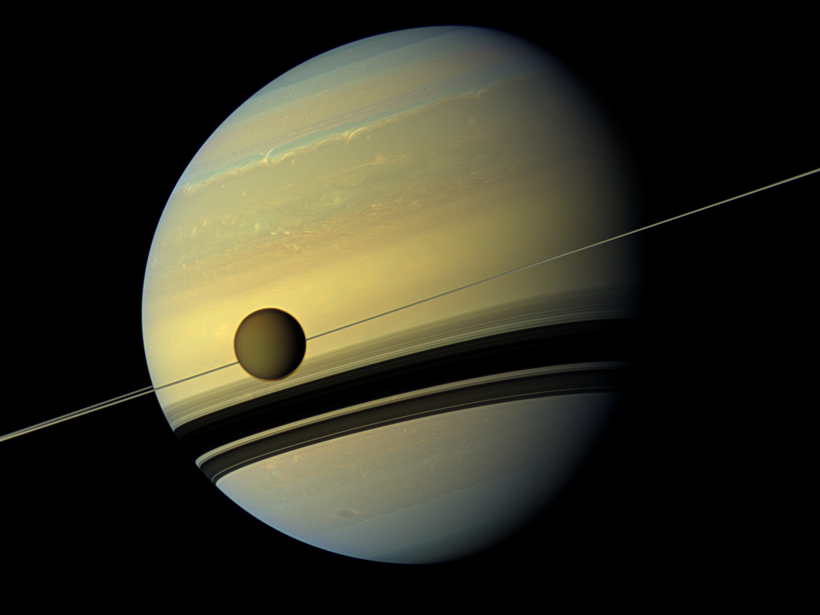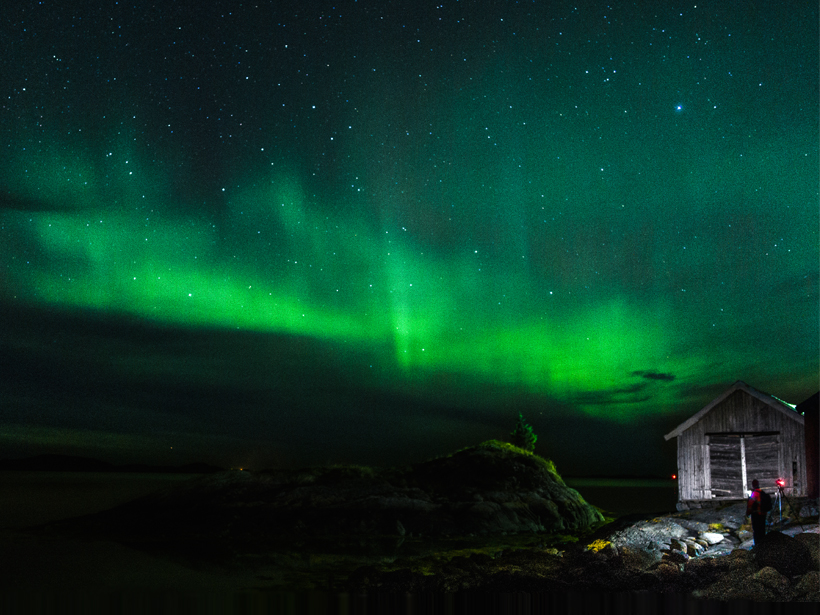A quartet of satellites flying through Earth's magnetic field measures its interaction with the Sun's and puts a theory about their reconnection to the test.
Mark Zastrow
Eos Freelance Writer
How Saturn Alters the Ionosphere of Titan
New research shows that Saturn's powerful magnetic field changes the atmospheric chemistry of its largest moon, Titan.
Scientists Detect Wisps of Wind in Space
In the near vacuum of low-Earth orbit, there are still faint tendrils of air—but measuring them is very tricky. A new study comparing two methods will make it a little easier.
Decoding the Radio Transmissions of Shooting Stars
Spectacular fireball meteors don't just light up the night sky—recent observations show they also emit mysterious high-frequency radio waves. Now scientists think they understand why.
Electric "Tornadoes" in Space Drive Disturbances Down to Earth
New simulations show how shocks in space can trigger vortexes in Earth's magnetic field, causing magnetic disturbances that are detectable from the ground.
Model of Solar Cycle's Impact on Climate Gets Upgrade
A new model of how the Sun's 11-year cycle affects climate leads to slight changes in model results on atmospheric chemistry, but temperature and wind results are consistent with the previous model.
Mercury's Magnetosphere Model Gets Retro Makeover
New observations from Mercury revive a once-abandoned model for its magnetic field, resulting in a new profile that better fits the data.
What Makes Jupiter's Aurora Pulse?
The aurora crowning Jupiter's poles—the most powerful in the solar system—flares up when plasma is injected into its magnetic field.
The Curious Case of the Halloween Ghost Electrons
When solar storms pounded Earth during Halloween in 2003, scientists were eager to measure their effects. But new research shows one satellite was seeing "ghost" particles that probably weren't real.
New Clues to Mysterious Hiss in Earth's Plasmasphere
An analysis of the electromagnetic "hiss" that surrounds Earth reveals it's not just static; there's a signal hidden within, which may help scientists uncover its source.








